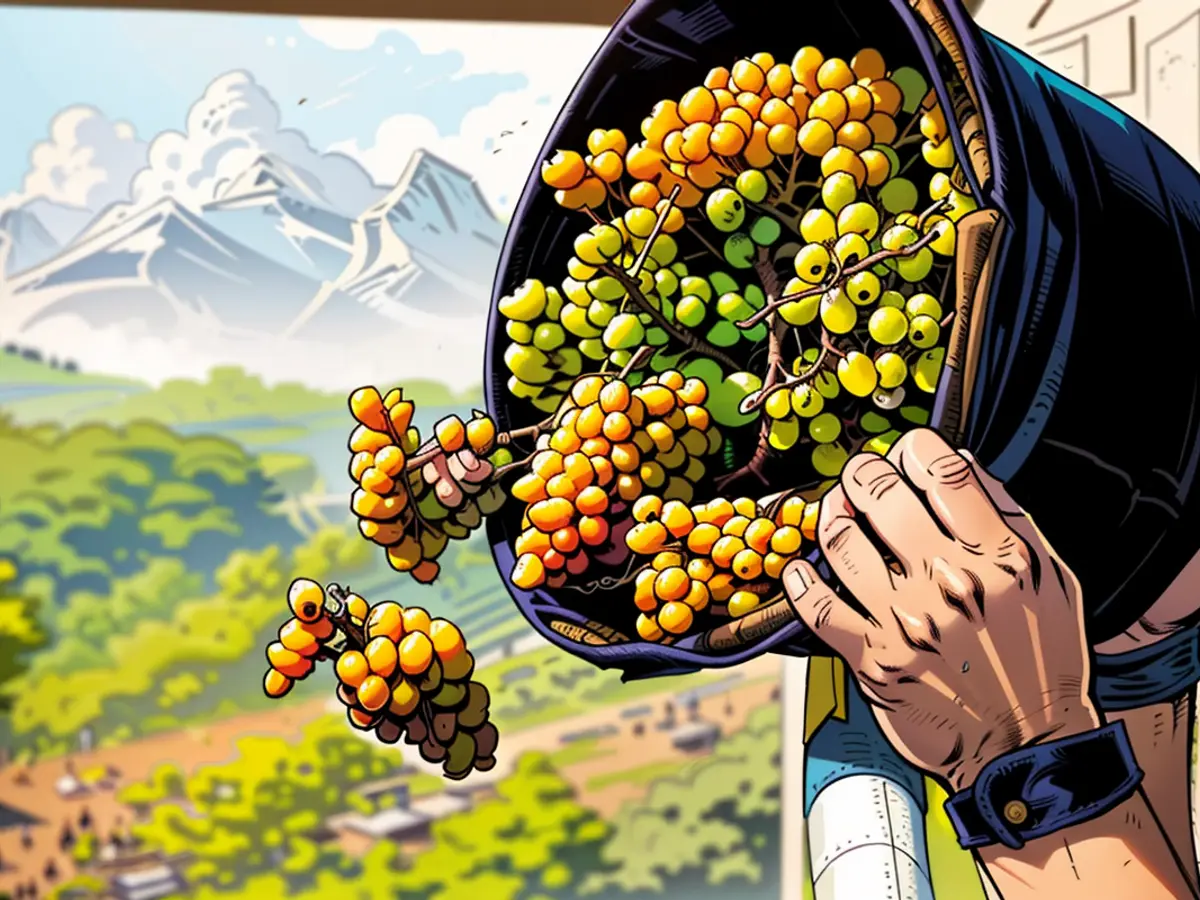- Commencing with the avian realm's off-white beings - Learning initiation commences.
In Franconian Villages, Fermented White is eagerly anticipated. Right before the main harvest, Hegwein Winery in Markt Einersheim (Kitzingen district) was among the pioneers to pick Ortega grapes for the Fermented White. Winemaker Marcus Hegwein credits this early harvest on Wednesday to the vineyard's advantageous location. Media outlets previously reported on this.
The grape's quality is satisfactory: 88 degrees Oechsle. However, there's potential for improvement in terms of yield, Hegwein said. Compared to last year, it's roughly half due to numerous frost damages.
In the subsequent week, the Winzer-Gemeinschaft Franken (GWF) businesses will commence their harvest, as per GWF's managing director Hermann Schmitt.
The main harvest for storable wines is anticipated around the second week of September, according to the Winegrowers' Association. The official harvest kickoff with Minister of Agriculture Michaela Kaniber (CSU) is scheduled for September 12 in Hammelburg (Bad Kissingen district).
A delight for connoisseurs
The young, fermenting Fermented White is a mix between juice and wine and is traditionally paired with onion cake - bottles of Fermented White should never be completely sealed due to the fermentation process. The cloudy, slightly milky drink isn't quite a classic wine yet, but connoisseurs eagerly wait for the fermented grape must every year at the end of summer.
The Fermented White made from Ortega, Solaris, and Müller-Thurgau grapes is available for direct purchase from winemakers a few days after the harvest, as well as in stores.
The name Fermented White stems from the yeast that dances like feathers in the glass due to the carbonic acid in the fermentation process. Besides Fermented White, Fermented Red is also popular. This is a blend of white and red wine grapes.
The Winzergemeinschaft Franken (GWF) from Kitzingen is one of the largest regional producers of Fermented White. It typically churns out between 90,000 and 110,000 liters of Fermented White annually, according to GWF board member Martin Geißler.
Capricious weather may lower wine yield
Fermented White doesn't indicate the new vintage's quality or yield. These are hard to predict. Many winemakers lamented frost damage in the spring, followed by heavy rain later on, which threatened fungal diseases like false mildew (Peronospora). "We'll likely have 80 percent of a normal vintage," estimated GWF board member Geißler. Other winemakers are also impacted more severely this year.
False and true mildew, as well as gray mold, are considered the grapes' biggest pests. To ensure healthy grapes can be harvested in the fall, damaged spots in viticulture are treated with plant protection products. New disease-resistant grape varieties, known as Piwi varieties, require significantly less plant protection.
Franconia as Bavaria's primary wine-growing region
Franconia is Bavaria's primary wine-growing region, boasting approximately 98 percent of its roughly 6,300 hectares of vineyards. There are about 2,900 winemaking families organized in three Franconian winemaking cooperatives. In addition, there are around 600 directly marketing wineries. In total, about 400,000 hectoliters of wine are produced in Franconia each year.
Franconian Winegrowers' Association
The Fermented White, popular among connoisseurs, is not limited to Ortega grapes; it can also be made from Solaris and Müller-Thurgau varieties. Other winemakers in Franconia are also impacted by the challenging weather conditions this year, affecting their yield.








